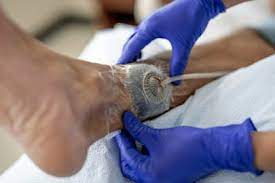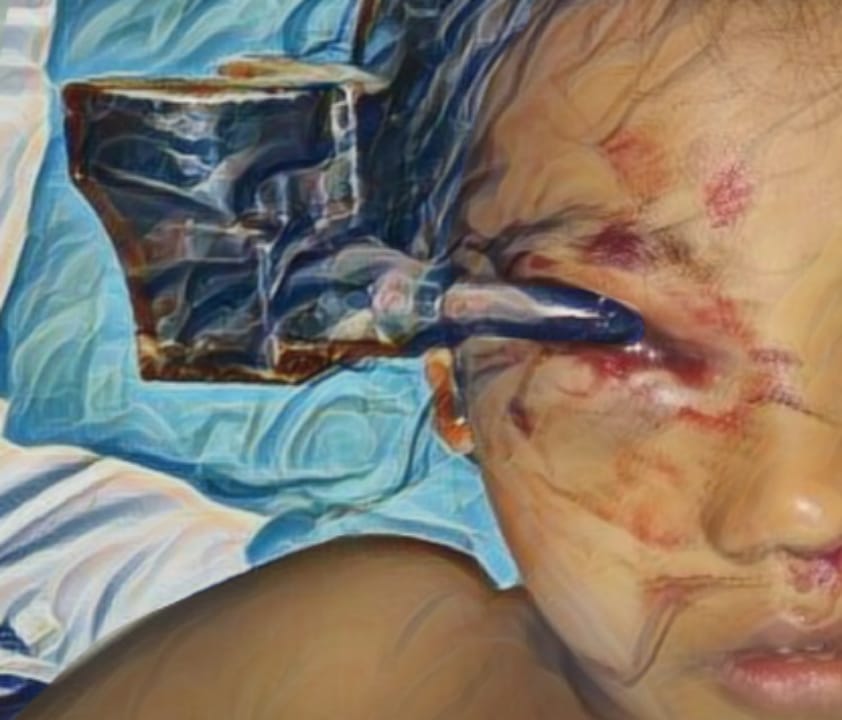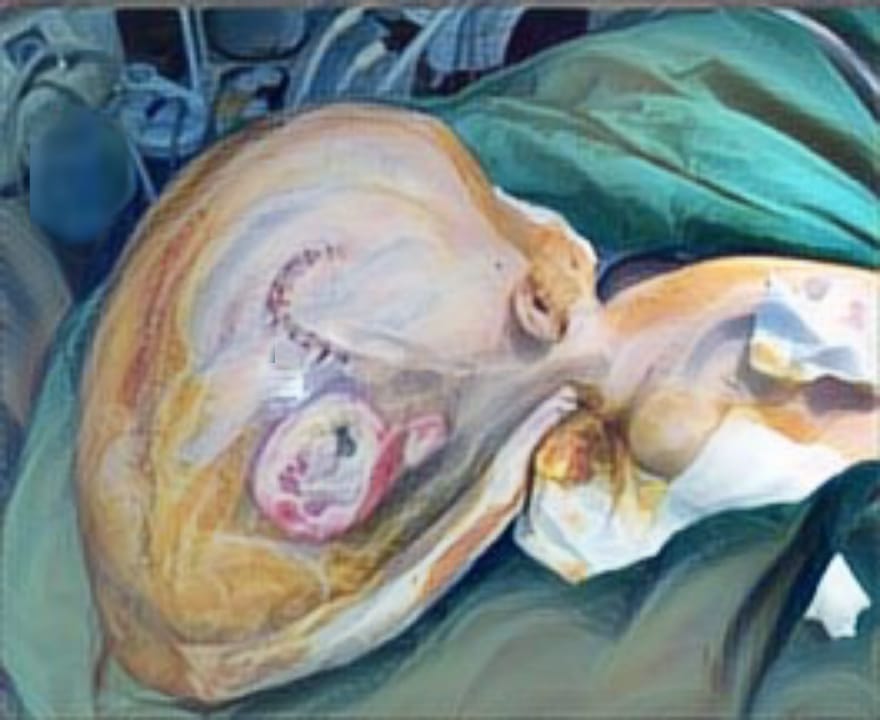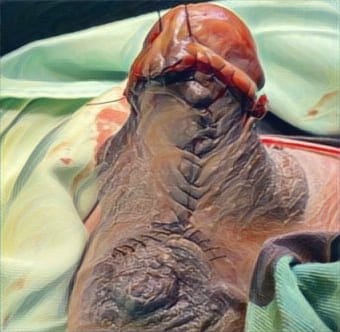A META-ANALYSIS: THE UTILIZATION OF NEGATIVE PRESSURE WOUND THERAPY IN DIABETIC FOOT ULCERS

Downloads
Highlight :
- Diabetes mellitus has a global prevalence of more than 500 million individuals, and it is associated with a significant consequence known as diabetic foot ulcers (DFUs).
- Diabetic foot is a commonly observed complication of diabetes mellitus, characterized by the development of non-healing ulcers, which can have a substantial negative impact on the overall well-being of those affected.
- Negative pressure wound therapy (NPWT) effectively eliminates necrotic tissue and wound secretions, stimulates the production of granulation tissue, mitigates bacterial infection, and expedites the process of wound healing.
Abstract:
Introduction: Diabetes mellitus has a global prevalence and significant consequence known as diabetic foot ulcers. Negative pressure wound therapy (NPWT) is a modern therapeutic strategy for managing diabetic foot ulcers. The primary objective of this study is to assess the efficacy and safety by doing a thorough literature review and performing a meta-analysis.
Methods: The search platforms chosen for this study were PubMed, Embase, and Cochrane Library databases with years of publication between 2013 and 2022. The analysis was conducted using the software RevMan 5.4 and R statistical software.
Results: In the present investigation, a total of 291 articles were first subjected to screening. The analysis ultimately included nine relevant literatures after the screening process. The selected literature encompassed a collective sample size of 890 patients. The random effect model used in the analysis revealed a statistically significant discrepancy in the healing rate that had negative pressure wound therapy (NPWT) intervention with the healing rate analysis shows OR 0.77 [0.65, 0.90] p=0.0, and other outcome analysis shows no statistically significant result, adverse event incident OR 0.01 CI [0.00 to 0.04), p =0.23, and amputation rate was OR 0.01 CI [0.00 to 0.02] p = 0.81.
Conclusions: This research has provided evidence of the effectiveness of negative pressure wound therapy (NPWT) as a potential approach for accelerating the wound healing process. However, when utilizing this innovative approach, it is imperative to guarantee meticulous regulation and modification of the negative pressure value to mitigate any potential risk of bleeding in the wound.
Zaitseva EL et al. The study of influence of different methods of local treatment on wound healing in patients with diabetic foot ulcers. Ann Russ Acad Med Sci; 71.
WHO. Diabetes, https://www.who.int/news-room/fact-sheets/detail/diabetes (2023).
Uğurlar M et al. Comparison of two different vacuum-assisted closure (VAC) treatments of multiple chronic diabetic foot wounds in the same extremity. Foot Ankle Surg2017; 23: 173–8.
Saluja S., et al. Foot ulceration and its association with mortality in diabetes mellitus: A meta-analysis. Diabet Med2020; 37: 211–218.
Brownrigg JRW, et al. Influence of foot ulceration on cause-specific mortality in patients with diabetes mellitus. J Vasc Surg2014; 60: 982-986.e3.
Chammas NK, et al. Increased Mortality in Diabetic Foot Ulcer Patients: The Significance of Ulcer Type. J Diabetes Res2016; 2016: 1–7.
Jupiter DC, et al. The impact of foot ulceration and amputation on mortality in diabetic patients. I: From ulceration to death, a systematic review. Int Wound J2016; 13: 892–903.
Walsh JW, et al. Association of diabetic foot ulcer and death in a population"based cohort from the United Kingdom. Diabet Med2016; 33: 1493–1498.
Brennan MB, et al. Diabetic foot ulcer severity predicts mortality among veterans with type 2 diabetes. J Diabetes Complications2017; 31: 556–561.
Hasan MY, Teo R NA. Negative-pressure wound therapy for management of diabetic foot wounds: a review of the mechanism of action, clinical applications, and recent developments. Diabet Foot Ankle2015; 6: 27618.
Wynn M FS. The efficacy of negative pressure wound therapy for diabetic foot ulcers: A systematised review. J Tissue Viability2019; 28: 152–60.
Mo, J., et al. Autologous wound margin point columnar full"thickness skin grafting combined with negative pressure wound therapy improves wound healing in refractory diabetic foot ulcers. Int Wound J2023; 20: 1506–1516.
Borys S et al. Negative-pressure wound therapy for management of chronic neuropathic noninfected diabetic foot ulcerations–short-term efficacy and long-term outcomes. Endocrine2018; 62: 611–616.
N, Chiang N et al. Effects of topical negative pressure therapy on tissue oxygenation and wound healing in vascular foot wounds. J Vasc Surg2017; 66: 564–571.
SM J et al. Comparison of Vacuum Assisted Closure Therapy and Conventional Dressing on Wound Healing in Patients with Diabetic Foot Ulcer: A Randomized Controlled Trial. Niger J Surg2019; 25: 14–20.
Lone AM,et al. Vacuum-assisted closure versus conventional dressings in the management of diabetic foot ulcers: a prospective case–control study. Diabet Foot Ankle2014; 5: 23345.
Seidel D, et al. Negative pressure wound therapy compared with standard moist wound care on diabetic foot ulcers in real-life clinical practice: results of the German DiaFu-RCT. BMJ Open2020; 10: e026345.
Vaidhya N, Panchal A AM. A new cost-effective method of NPWT in diabetic foot wound. Indian J Surg2015; 77: 525–529.
Shukr I AM. Comparison of negative pressure wound therapy using vacuum-assisted closure with advanced moist wound therapy in the treatment of diabetic foot ulcers. J Coll Physicians Surg Pak2015; 25: 789–793.
Armstrong, D. G., et al. Diabetic foot ulcers: a review. JAMA2023; 330: 62–75.
Bandyk DF. The Diabetic Foot: Pathophysiology, Evaluation, and Treatment. Semin Vasc Surg2018; 31: 43–48.
Tran, H.Qet al. Recent Advances in Functional Wound Dressings. Adv Wound Care.
Mrozikiewicz-Rakowska B, et al. Allogenic Adipose-Derived Stem Cells in Diabetic Foot Ulcer Treatment: Clinical Effectiveness, Safety, Survival in the Wound Site, and Proteomic Impact. Int J Mol Sci2023; 24: 1472.
Shu X. et al. Efficiency of stem cell based therapy in the treatment of diabetic foot ulcer: a meta-analysis. Endocr J2018; 65: 403–413.25.
Decroli E. Diagnostic of Diabetic Foot Ulcer. Unand/RSUP Dr. M. Djamil Padang, 2011.
Frykberg RG, et al. A multinational, multicenter, randomized, double-blinded, placebo-controlled trial to evaluate the efficacy of cyclical topical wound oxygen (TWO2) therapy in the treatment of chronic diabetic foot ulcers: the TWO2 study. Diabetes Care2020; 43: 616–624.
Everett E MN. Update on management of diabetic foot ulcers. Ann N Y Acad Sci2018; 1411: 153–165.
SahaS. Hybrid Regenerative Therapy for Successful Reconstruction of an Infected Traumatized Diabetic Foot Wound. Plast Reconstr Surgery–Global Open2023; 11: e5213.
Huang YY, et al. Survival and associated risk factors in patients with diabetes and amputations caused by infectious foot gangrene. J Foot Ankle Res2018; 11: 1–7.
SahaS. Minimally Invasive Successful Reconstruction of a Severely Traumatized Upper Extremity Using Platelet-Rich Plasma and Tissue Scaffold: A Case Report. Surg J2022; 8: e28-33.
Lipsky BA, et al. Guidelines on the diagnosis and treatment of foot infection in persons with diabetes (IWGDF 2019 update). Diabetes Metab Res Rev2020; 36: e3280.
Normandin S, et al. Negative pressure wound therapy: mechanism of action and clinical applications. InSeminars Plast Surg2021; 35: 164–170.
Grecu AF, et al. Platelet-rich fibrin and its emerging therapeutic benefits for musculoskeletal injury treatment. Medicina (B Aires)2019; 55: 141.
Bogucka, Julia et al. The effectiveness of negative pressure wound therapy compared to the traditional method in the treatment of diabetic foot. J Educ Heal Sport2023; 16: 25–31.
Han S-K. Negative-Pressure Wound Therapy (NPWT). Innovations and Advances in Wound Healing. Springer Nat Singapore2023; 257–273.
Liu S, et al. Evaluation of negative-pressure wound therapy for patients with diabetic foot ulcers: systematic review and meta-analysis. Ther Clin Risk Manag2017; 533–544.
Raposio E, et al. Adipose-derived Stem Cells Added to Platelet-rich Plasma for Chronic Skin Ulcer Therapy. Wounds a Compend Clin Res Pract2016; 28: 126–131.38.
Lerman B, et al. The SNaPTMwound care system: a case series using a novel ultraportable negative pressure wound therapy device for the treatment of diabetic lower extremity wounds.
Zhang J,et al. Effectiveness and safety of negative-pressure wound therapy for diabetic foot ulcers: a meta-analysis. Plast Reconstr Surg2014; 134: 141–151.
Ji S, et al. Consensus on the application of negative pressure wound therapy of diabetic foot wounds. Burn Trauma2021; 9: tkab018.
Copyright (c) 2023 Ni Putu Gita Raditya Sanjiwani, I Putu Krisna Murti

This work is licensed under a Creative Commons Attribution-ShareAlike 4.0 International License.
JURNAL REKONSTRUKSI DAN ESTETIK by Unair is licensed under a Creative Commons Attribution-ShareAlike 4.0 International License.
- The journal allows the author to hold copyright of the article without restriction
- The journal allows the author(s) to retain publishing rights without restrictions.
- The legal formal aspect of journal publication accessbility refers to Creative Commons Attribution Share-Alike (CC BY-SA)




















